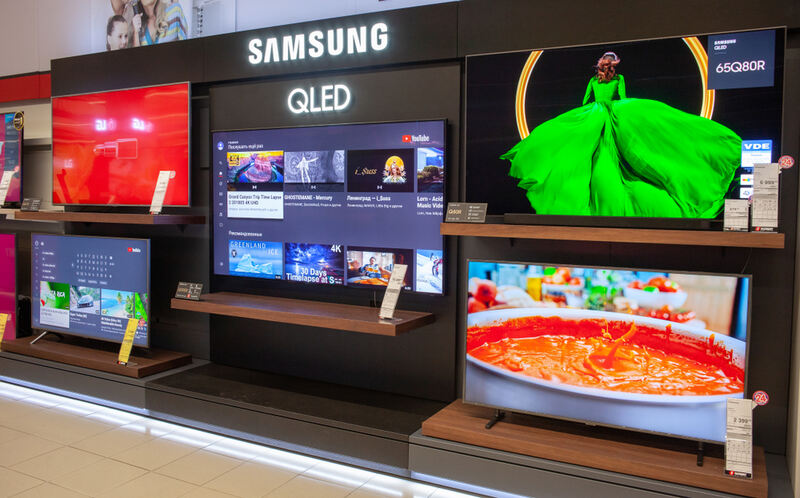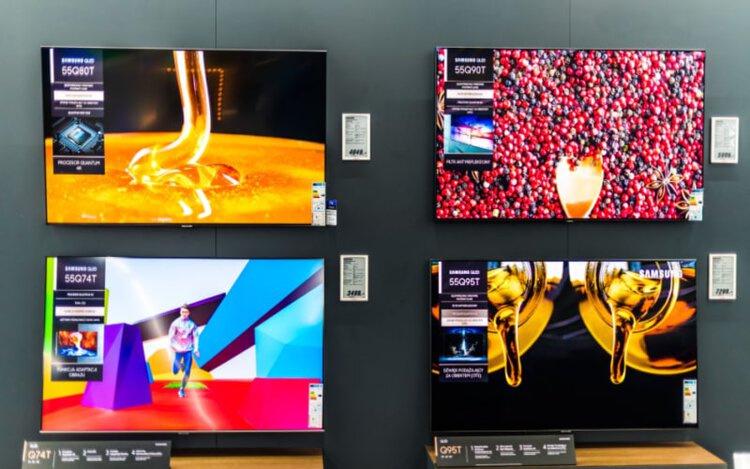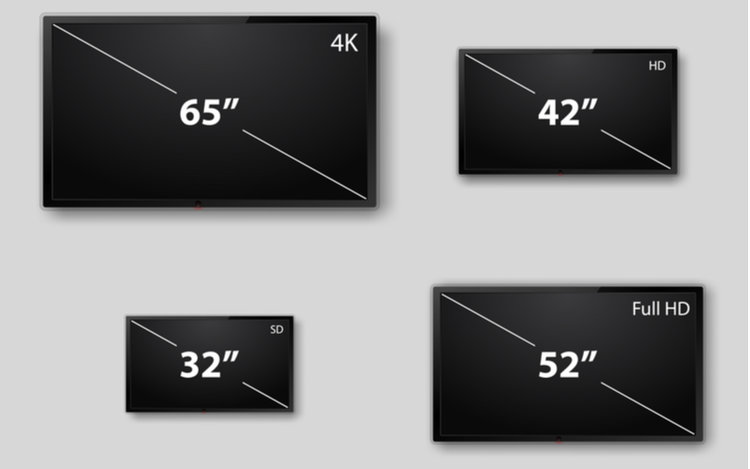Samsung TV Sizes & Weight, Explained (50, 55, 65, 75 Inch)

You’re shopping for a new TV wall mount and can’t find one that seems to fit your Samsung TV. You’ve measured the sides of your TV, but the measurements don’t seem to line up with the products online.
Your TV isn’t a custom-made unit, so what gives?
Believe it or not, you’re incorrectly measuring your TV. TV measurements are calculated differently than other electronic measurements.
So, how do you measure a TV? How much does a typical Samsung TV weigh?
In this article, we’ll tell you everything you need to know when measuring and calculating your Samsung TV’s weight.
Grab your tape measure, and let’s get started!
Typical Sizes & Weight of Samsung TVs
Let’s learn the typical weight of Samsung TVs.

Knowing your Samsung TV’s weight is extremely important when mounting or shipping it. You may also want to estimate your TV’s weight if you’re planning on carrying it, to avoid picking up a TV that’s too heavy for you.
The table below includes Samsung TVs’ typical weights, so your Samsung TV may weigh slightly more or less.
The weights listed below do not reflect a TV’s weight with its stand.
This information is taken from the official Samsung website.
| Screen Size | Dimensions | Weight |
| 50 inches | 1118.3 x 644.1 x 25.7 mm | 23.6 lbs (10.7 kg) |
| 55 inches | 1232.1 x 708.3 x 25.7 mm | 32.4 lbs (14.7 kg) |
| 65 inches | 1450.9 x 831.4 x 25.7 mm | 46 lbs (20.9 kg) |
| 75 inches* | 1672.7 x 985 x 34.5 mm | 69 lbs (31.3 kg) |
* Please note that 75-inch TVs tend to vary greatly in weight. So, if you have a 75-inch TV, we recommend consulting your user manual for the most accurate measurements.
How are Screens Measured?
TV screens are measured diagonally.

This is due to the fact that many older TV screens (like CRT TVs) were rounded and square, making it difficult to accurately calculate the TV’s measurements by simply measuring their height and width.
So, manufacturers began advertising the TV’s diagonal length, to ensure users knew exactly how big the TV would actually be. This has since become the standard for TV measurements, allowing manufacturers and users alike to understand a TV’s size accurately.
To measure your TV, hold a tape measure on one of its top corners, then pull it to the corner of the opposite side. Make sure the measuring tape is taught, then take note of the measurement.
Now you know how big your TV screen is!
We recommend using a fabric tape measure for this process, as a metal tape measure could scratch your TV, damaging it.
Wrapping Things Up
All TV screen sizes are measured diagonally, from one top corner to the bottom corner on the opposite side. This ensures that the measurements are correct and will not vary based on the screen’s shape.
Return to this guide every time you’re unsure of how to measure your TV accurately or want to know how much your Samsung TV weighs. However, if your TV is 75 inches, be sure to double-check its manual, as this screen size varies in weight.
Did you know how TVs are measured? Let us know in the comments below!
Yesenia Achlim is a technical copywriter and editor with a focus on AV equipment. She aims to break down complicated topics and make technology accessible, no matter your technical expertise. When she’s not teaching you how to replace a projector lamp, you can find her reading and baking.

